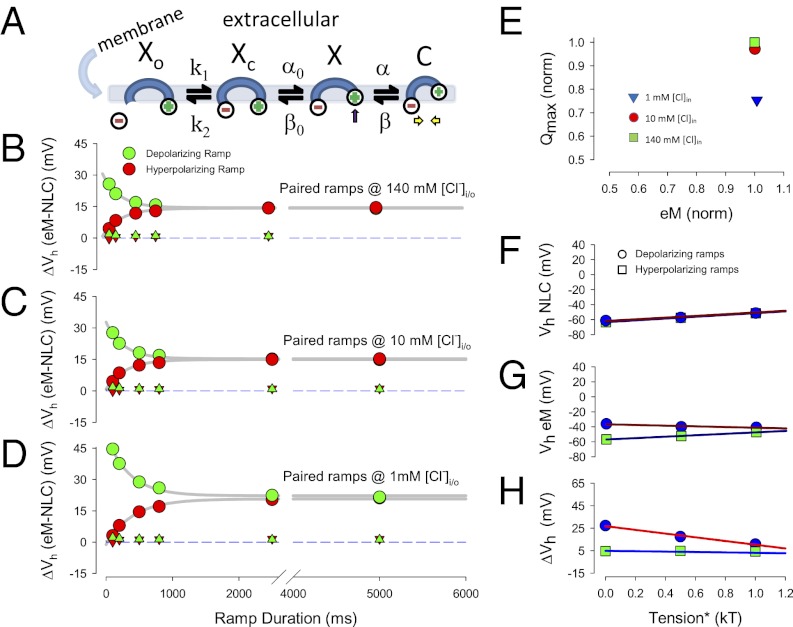Fig. 5.
Kinetic model of prestin. (A) Simple kinetic model of prestin activity within the plasma membrane. Xo state is unbound by anion. The Xc state is bound by anion but intrinsic voltage-sensor charge is not responsive to membrane electric field. Slow conformational transition to X state enables voltage sensing of electric field (arrow depicts positive charged sensor movement into the membrane field). Depolarization moves positive sensor charge outward within the membrane field, simultaneously resulting in compact state C, which corresponds to cell contraction (yellow arrows). (B–D) Kinetic model recapitulates ΔVh disparity of biophysical data. Plots correspond to those plots of Fig. 3 A–C. Note increasing Vh disparity with chloride reduction and shorter ramp durations. There is a slight asymmetry at fast ramp rates for the 1 mM chloride condition. Triangles depict results obtained when the intermediate transition rates were increase by a factor of 1e8. No disparity is detected under these conditions, as expected for a simple fast two-state model. (E) Kinetic model recapitulates uncorrelated Qmax and eMmax of biophysical data. As chloride levels decrease, Qmax decreases, but eM does not follow. Compare with biophysical data of Fig. 3D. (F–H) Kinetic model recapitulates membrane tension dependence of biophysical data. Plots correspond to those plots of Fig. 3 E–G. Note similarity of model behavior and biophysical behavior, resulting in reduced ΔVh disparity as membrane tension increases.

